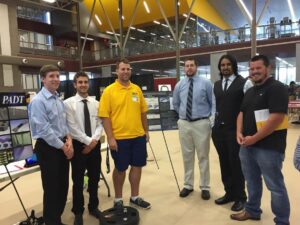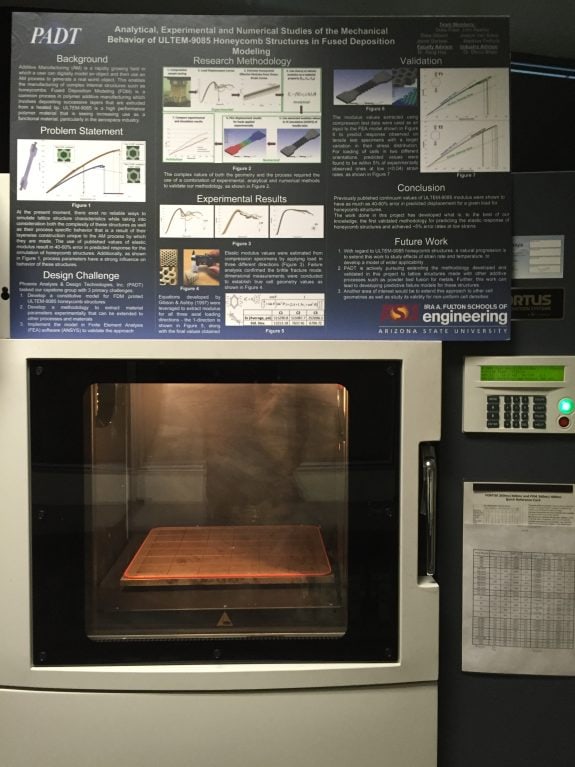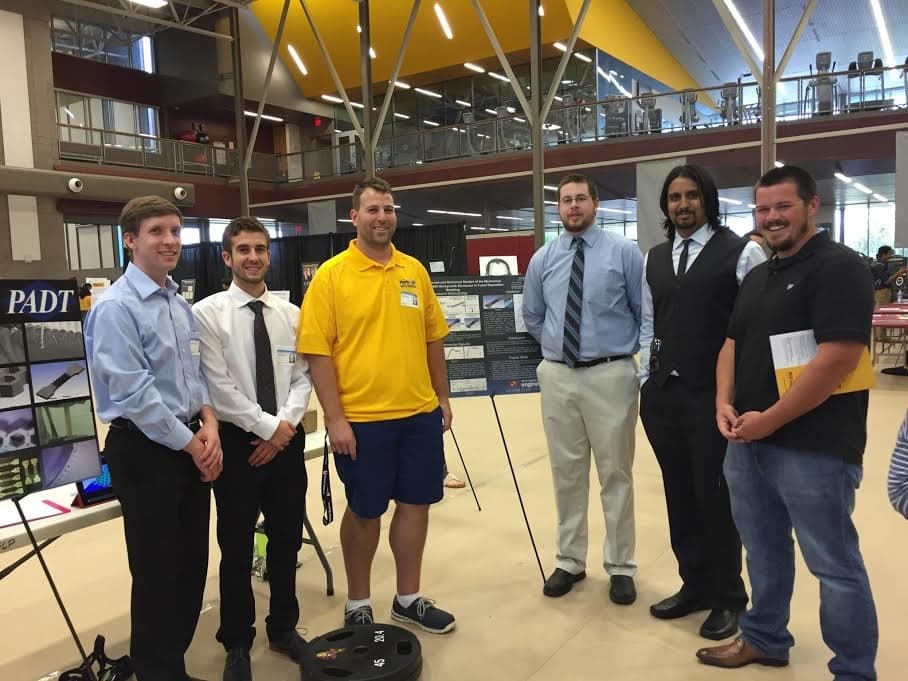
Over the past two academic semesters (2015/16), I had the opportunity to work closely with six senior-year undergraduate engineering students from the Arizona State University (ASU), as their industry adviser on an eProject (similar to a Capstone or Senior Design project). The area we wanted to explore with the students was in 3D printed lattice structures, and more specifically, address the material modeling aspects of these structures. PADT provided access to our 3D printing equipment and materials, ASU to their mechanical testing and characterization facilities and we both used ANSYS for simulation, as well as a weekly meeting with a whiteboard to discuss our ideas.
While there are several efforts ongoing in developing design and optimization software for lattice structures, there has been little progress in developing a robust, validated material model that accurately describes how these structures behave – this is what our eProject set out to do. The complex internal meso- and microstructure of these structures makes them particularly sensitive to process variables such as build orientation, layer thickness, deposition or fusion width etc., none of which are accounted for in models for lattice structures available today. As a result, the use of published values for bulk materials are not accurately predictive of true lattice structure behavior.
In this work, we combined analytical, experimental and numerical techniques to extract and validate material parameters that describe mechanical response of lattice structures. We demonstrated our approach on regular honeycomb structures of ULTEM-9085 material, made with the Fused Deposition Modeling (FDM) process. Our results showed that we were able to predict low strain responses within 5-10% error, compared to 40-60% error with the use of bulk properties.
This work is to be presented in full at the upcoming RAPID conference on May 18, 2016 (details at this link) and has also been accepted for full length paper submission to the SFF Symposium. We are also submitting a research proposal that builds on this work and extends it into more complex geometries, metals and failure modeling. If you are interested in the findings of this work and/or would like to collaborate, please meet us at RAPID or send us an email (info@padtinc.com).




















